Table of contents
The raw apple ( Malus domestica ) is rich in health-promoting secondary plant substances, which are found not only in the pulp, but also in the core and in up to five times higher concentrations in the peel .
Use in the kitchen:
A crisp, juicy apple is the ideal raw food snack for in-between meals; it is robust, can be taken anywhere, is refreshing, delicious and energizing. The most popular and most frequently consumed fruit of the Germans, Swiss and Austrians can be used raw in many different ways: in fruit salad, pureed as apple sauce or smoothie , juiced as apple juice , dried as dried apples or as an ingredient in autumn salads with carrots , lamb's lettuce and nuts or in desserts .
Apples are ideal for preserving, with the fruit's high pectin content acting as a natural preservative and gelling agent. Apple compote, apple sauce and apple jelly are typical examples of how apples can be preserved by preserving. Apples are also a popular ingredient in soups and go well with pumpkin.
Apples are an essential part of many baking recipes, and the fruit goes particularly well with cinnamon . Popular baked goods with apples include apple tart, sunken apple cake, covered apple cake, apple pie, apple crumble and, of course, apple strudel. 4
Applesauce is a welcome egg substitute in vegan cooking and a natural sweetener for cakes and pastries, especially muffins and cakes with moist dough. Instead of one egg, use 80 g of applesauce. The apple flavor evaporates almost completely during baking.
German food monitoring shows that apples contain little to no harmful substances. Nevertheless, it is advisable to wash apples with warm water before eating them and rub them thoroughly with a cloth. This is a good way to remove any residues that are stuck to the outside. Organic quality apples, on the other hand, are not treated with synthetic pesticides. 1
The tart, fruity, young leaves of the apple tree can be harvested in April, while the leaf stalks are still soft. They can be added to chopped herb mixtures and sauces or used dried as tea. From April to May, the fruity apple blossoms are suitable for decorating and flavoring dishes and tea. 2
Apples are a component of the gluten-free and raw vegan Erb-Müesli . In addition to energy-giving bananas, vitamin C-rich citrus fruits and berries that provide antioxidants, it also contains pseudocereals, seeds and golden millet . Also try the Erb-Müesli plus oat flakes variant!
Vegan recipe for apple and walnut yeast pockets:
First, dissolve a cube of fresh yeast in 100 ml of lukewarm oat milk (sweetened with 1 teaspoon of sugar ) and leave to rest for about a quarter of an hour. For the dough, melt 100 g of margarine in 150 ml of oat milk on the stove and knead in a mixing bowl with 500 g of whole wheat flour, 60 g of sugar, a pinch of salt and the yeast to form a smooth dough. While the dough is rising, for the filling, roast 150 g of chopped walnuts in a pan without fat, add 1-2 grated apples, a little sugar and cinnamon and wait until some of the apple juice has evaporated. Roll out the yeast dough and cut out 10x10 cm squares, fill each with 1 tablespoon of apple and walnut mixture and fold up the corners. Bake in a preheated oven at 200 °C top/bottom heat for approx. 20-25 minutes.
Vegan recipe for red apple fruit leather with coconut:
Chop 450 g cored apples, 50 g beetroot and a quarter of a whole lemon and puree finely. Season the fruit puree with 1 tbsp maple syrup , a little cinnamon, a pinch of salt and a pinch of cardamom , nutmeg and clove powder (preferably freshly ground). Then spread the fruit puree evenly on a baking tray lined with baking paper and sprinkle the fruit mixture with coconut flakes . Leave the fruit puree to dry for at least half a day at around 50 °C with the oven door slightly open. The apple fruit leather is ready when it can be pulled off the tray in one piece. It can be cut into strips and rolled up, cut out decorative shapes or, after an even longer drying time, broken apart like chips.
Recipe for apple tea:
For a large cup of apple tea, pour 300 ml of boiling water over 1-2 tablespoons of dried apple peel and pieces and let it steep for 10 minutes. If you like it even fruitier, add chopped rose hips. For an intense, tart, fruity apple aroma, you can enhance the apple tea with young apple leaves or apple blossoms harvested in April. The apple tea can also be refined with lemon, ginger and spices such as cinnamon, cloves or star anise .
| Not only vegans or vegetarians should read this: Vegans often eat unhealthily. Avoidable nutritional mistakes . |
Shopping - where to buy?
Apples are a permanent part of the range in all well-known supermarkets and discounters such as Coop , Migros , Denner , Volg , Spar , Aldi , Lidl , Rewe , Edeka or Hofer and are in season for us all year round. Of the 5,700 different types of cultivated apple, retailers usually offer five to six global varieties. The three common apple varieties 'Golden Delicious', 'Jonagold' and 'Red Delicious' make up almost 70% of the European apple market. The apple varieties'Gala' , 'Granny Smith' , 'Elstar', 'Cox Orange' and 'Schöner aus Boskoop' are also economically important. Apples such as 'Pink Lady' are so-called club varieties or branded apples that can only be marketed with a license. 3
In organic supermarkets such as Denns or Alnatura , in health food stores, in smaller organic shops or at the local weekly market, you can often find locally grown and rarer apple varieties. It is also possible to buy apples directly from the farmer, in a subscription box (Green Box) or online.
When buying apples, you should make sure that the fruit is not exposed to the blazing sun, as this reduces the content of light-sensitive vitamins and causes them to age more quickly. A dried-out stem or a firm, slightly wrinkled skin, for example, are signs of old apples. In overripe and incorrectly stored apples, the ester content, which is crucial for the formation of aroma, increases significantly. The apples then smell unappetizingly perfumed. A healthy apple can be recognized by its undamaged skin, which is free of rot and bruises. The flesh should be crisp and firm. 1,3
Due to special storage methods and imports from the southern hemisphere (New Zealand, Chile, Argentina), apples are available in stores all year round in consistent quality. When stored under a controlled atmosphere (CA storage), the natural ripening gas of the apples can be inhibited or removed. In the EU and Switzerland, 1-methylcyclopropene (trade name e.g. SmartFresh) is also used, which blocks the receptors for the ripening-stimulating signals of ethylene (ethene). 3
Storage:
Apples are climacteric fruits, meaning they continue to ripen after harvest. In doing so, they emit the gaseous plant hormone ethylene. If you place an apple under a cover next to other unripe fruits, the gas emitted by the apple will ensure that they ripen more quickly. 3 Fruit and vegetables that are sensitive to ethylene include pears , broccoli , cauliflower , cucumbers and tomatoes , and types that are not sensitive to ethylene include leafy vegetables, leeks and mushrooms. 1
A sealable polyethylene (PET) film bag with small air holes is ideal for storing whole apples. This protects the apples from drying out. In addition, the carbon dioxide exhaled by the fruit accumulates while the oxygen content decreases, which slows down the ripening and aging processes. 1 Whole apples, which have a pronounced natural wax layer, can be stored for longer because they also dry out more slowly. 3
When apples are cut, the flesh browns enzymatically. How quickly and how intensely the browning occurs depends on the vitamin C content and the type of apple. The cut surface should be covered and the apple should be stored in the refrigerator to slow down the oxidation process. 3
Ingredients - nutritional value - calories:
What does an apple contain? Apples contain a high proportion of water or juice and relatively low amounts of vitamins and minerals. They contain practically no fat or protein. 4 The main component of nutrients is carbohydrates, at 14 g/100g. Of these, 10 g are made up of the mainly easily digestible simple sugars fructose and glucose. 5,6
With 2.4 g of fiber per 100 g (including water-soluble pectin), a large apple (200-250 g) contributes considerably to meeting the daily requirement. However, wheat bran (42.8 g/100g), hemp seeds (27.6 g/100g), dried kidney beans (24.9 g/100g) or wheat grains (12.5 g/100g) provide far more fiber. 4
There are big differences in vitamin C content depending on the apple variety: Gloster 5-10 mg/100g, Elstar 10-15 mg/100g, Boskoop 15-20 mg/100g, Jonagold 0-28 mg/100g, Braeburn 30-35 mg/100g. 5
Apples contain a variety of secondary plant substances, with phenolic acids (chlorogenic acid) and flavonoids (quercetin, epicatechin, catechin, procyanidins, anthocyanins) being the most common. The content of secondary plant substances also depends heavily on the type of apple. Canadian scientists have been able to prove that the amount can vary by up to 60%. While the storage of apples has little effect on the phytochemical composition of the apples, processing can have a strong influence on it.
Since secondary plant substances are found more in the peel, you should eat the fruit with the peel. The peel contains about five times as many polyphenols as the flesh, although certain secondary plant substances are also found in the core. Apples are one of the main food sources of total phenols worldwide. 1,7,8,9,10 Would you like to know how many nutrients are still contained in a peeled apple? Read our article on apples without the peel .
The taste of apples depends mainly on the content of sugars, fruit acids and fruit-typical aromas. Stone fruit, which includes apples, contains a lot of malic acid. 6
Detailed information on nutritional values and nutrients can be found in the tables below. These show, for example, the percentage coverage of the daily requirement.
Health aspects - effects:
Why are apples so healthy? Apples generally have an astringent, slightly laxative, germicidal and soothing effect on the stomach. 2
The pectins contained in apples are water-soluble fibers and are a good source of food for intestinal bacteria. As they multiply, they stimulate intestinal activity and increase stool weight. Due to their very high swelling capacity, pectins can absorb and excrete toxic decomposition products from microorganisms in the intestine. 6 In the case of diarrhea, giving a grated apple can help prevent further major losses of fluid and minerals. The pectins swell in the intestine, bind fluid and thus thicken the thin stool. 1
In the laboratory, it was found that the secondary plant substances found in apples have a very strong antioxidant activity. Antioxidants are able to neutralize so-called free radicals. As reactive oxygen species (ROS), free radicals can cause damage to DNA (genetic information), denature proteins, inactivate enzymes or oxidize blood fats. Acute or chronic diseases and aging processes are associated with free radicals. 8,10
Antioxidants inhibit the growth of cancer cells, have a positive effect on blood lipid levels (cholesterol levels) and protect LDL cholesterol from oxidation, among other things. 8,6 Antioxidants thus block the complex process of arteriosclerosis development at a crucial, very early stage. Today we know that oxidized LDL cholesterol is a major risk factor for arteriosclerosis. 11
As part of a healthy diet and lifestyle, regular consumption of apples can protect against numerous chronic diseases such as cardiovascular disease, asthma or cancer. Scientists estimate that by increasing the consumption of fruit, vegetables and whole grains, around a third of all cancer deaths could be prevented. For example, eating one or more medium-sized apples (166 g) per day reduces the risk of cancer compared to eating less than one apple per day. A significant reduction in risk was found for the following types of cancer: cancer of the oral cavity and throat (reduced risk by 18%), esophageal cancer (22%), colon cancer (30%), laryngeal cancer (41%), breast cancer (24%), ovarian cancer (24%) and prostate cancer (7%). Researchers also found that whole apples or apple extracts are often more effective than the synthetic compounds. 7
Current evidence shows that eating an apple every day can also have a positive or preventive effect on the following functions, metabolic disorders or diseases: cognitive decline during aging, protection of the gastrointestinal tract from the effects of drugs, weight management, osteoporosis, maintenance of lung function and diabetes. Further clinical studies are needed to prove cause and effect. 7
Although the term superfood is purely for marketing purposes, it is at least as appropriate for the apple as it is for chia seeds or goji berries . In addition to its health benefits, it also scores points for being grown locally.
Dangers - intolerances - side effects:
Apple seeds contain an insignificant amount of amygdalin (cyanogenic glycoside and precursor of hydrogen cyanide), as in other foods, e.g. almonds , orange seeds or lemon seeds. The intake of amygdalin as a component of food, usually in small quantities, is generally harmless. It should be noted that the use in isolated and enriched form is not comparable to natural intake. You should therefore not regularly eat apple seeds in quantities of 100 g. Heating the seeds in an open pot or chopping and then drying ground apple seeds largely destroys the enzyme that activates the hydrogen cyanide when consumed. 2,12
In Central Europe, apples are one of the most important food allergens, with pollen allergy sufferers being particularly affected. According to the current state of science, it is known that the allergenic risk only comes from eating fresh apples. The allergenic effect of apples depends heavily on the variety. For example, 'Braeburn', 'Elstar', 'Granny Smith', 'Golden Delicious' or 'Jonagold' are among the more strongly allergenic varieties, while 'Alkmene', 'Berlepsch', 'Boskoop', 'Idared', 'Jamba' or 'Rubinette' are among the less allergenic varieties. The allergenicity of fresh apples is lost through heating or technological processing, and so a large number of processed and heated products such as apple juice, apple sauce or dried apples can also be tolerated by allergy sufferers. 1,13
Since the malic acid found in apples attacks tooth enamel, you should rinse your mouth with water after eating. This can dilute the acid and speed up the replacement of the dissolved minerals. You should also make sure that you do not brush your teeth until 30 minutes after eating or drinking acidic foods, as this will otherwise lead to increased abrasion of the upper layers of the teeth. 14 In the worst case, a disproportionately high consumption of acidic fruit (but also sugar, sweets, soft drinks) can dissolve the chewing surfaces of the teeth. In addition, you should not move acidic drinks, which include apple juice, around in your mouth or drink them in sips over a long period of time, as this will permanently expose your teeth to the acid. 15,16
The best protection for teeth is saliva: it rinses, remineralizes and neutralizes. Chewing gum containing xylitol (without carcinogenic sweeteners) is suitable for stimulating saliva production. The evaporation of the sugar alcohol actually stimulates the flow of saliva, stops the growth of caries bacteria and prevents plaque formation. 15,16
Why shouldn't you eat too many apples a day? By this we mean more than 4 apples regularly a day. 100 g of apple contains 7.2 g of fructose. 17 Large intakes of fructose of more than 35 g per hour can exceed the absorption capacity of the intestines, even in many healthy people. The problem lies less in eating several apples a day, but rather in the unrestricted consumption of sweetened drinks, concentrated fruit products such as smoothies or fruit juices, and industrially processed foods, which often contain added fructose. 18
Folk medicine - natural healing:
Long before it came to Central Europe, the apple was used as a life-prolonging remedy. 3 Today, this is reflected in the well-known saying "An apple a day keeps the doctor away." There are now numerous studies that prove the positive health effects of regular apple consumption.
Occurrence - Origin:
Where does the apple come from? The original home of the cultivated apple is in Asia. However, its origin is not clearly established. Either the cultivated form arose from crosses between the wild crab apple ( Malus sylvestris ) and Malus praecox or Malus dasyphylla (not: dasyphylia ) - or it originates from the Asian wild apple ( Malus sieversii ), with crosses between the Caucasus apple ( Malus orientalis ) or the cherry apple ( Malus baccata ). 3
The cultivated apple probably reached Central Europe via trade routes, and wild boar and horses probably also contributed to its spread through seeds. The oldest documented variety of cultivated apple is almost certainly the Borsdorf apple, which the Cistercians mentioned in 1170. 3
Cultivation in the garden:
The frost-hardy apple trees require moderately nutrient-rich, moist but water-permeable soil in full sun. If you are not familiar with root and crown grafting, it is best to buy a young and already grafted apple tree from a specialist retailer. 3
Only exposure to cold or fermentation processes make apple seeds capable of germinating. However, since the seedlings from the seeds are never pure, vegetative propagation or grafting is used to preserve and breed apple varieties. To do this, the desired varieties are grafted onto a well-growing rootstock. This supplies the noble shoot with water and nutrients, but also has a strong influence on the properties of the noble variety. 3,19
Cultivation - Harvest:
The summer green cultivated apple tree reaches a height of 8-15 m when grown outdoors, and develops a wide spreading tree crown. However, this growth form is rare, as pruning and rootstock have a significant influence on the appearance of the fruit trees. There is the spindle bush, which grows on a weakly growing rootstock, as well as the half-standard and the standard tree. 3
According to figures from the Food and Agriculture Organization (FAO) of the United Nations, the world harvest in 2017 was 83.1 million tonnes of apples. In Germany, the share of the global harvest fell to 596,666 tonnes, in Switzerland to 225,622 tonnes and in Austria to 185,244 tonnes. 3
In Europe, Normandy and the Po Valley are among the economically most important apple-growing regions. While apples from the Mediterranean region are mainly intended for export, they are used for domestic consumption in northern and central Germany and in the Alpine region. 3
Animal protection - species protection - animal welfare:
Apple blossoms serve as valuable food for bees, wild bees and bumblebees, but also for pollen-eating beetles, mainly during the months of April to May (spring forage). Forage is the general term for the food that the bees bring in, i.e. nectar, pollen and honeydew. Cross-pollination of apple blossoms is obligatory, with pollination of just 5% of the blossoms being sufficient for a full harvest. 3,20,21
The nectar and pollen value of the disc-shaped apple blossoms, which are deep pink on the outside and pure white to delicate pink on the inside, is very high (nectar value and pollen value scale: none, low, medium, high, very high). The sugar content of the nectar is between 9 and 87% and the sugar value of the individual blossoms is up to 1.37 mg of sugar per day. Nectar and pollen content reflect the value for insects and serve as a guideline and decision-making aid for new plantings and gardening. 20,21
General information:
The cultivated apple ( Malus domestica Borkh., syn. Pyrus malus L.) is one of the 42 to 55 apple species from the apple genus ( Malus ). Apples are pome fruits (Pyrinae) and belong to the rose family (Rosaceae). 3,22
According to Wikipedia , there are around 1,500 different varieties of cultivated apple in Germany, of which only around 60 are economically important. The official "list of apple varieties" includes more than 7,600 names and more than 2,900 pictures of over 5,700 varieties of cultivated apple. The cultivated apple is therefore the best known and most economically important type of apple in the world. 3,22
Other apple species such as the Japanese apple ( Malus floribunda ) from East Asia, the cherry apple ( Malus baccata ) or Malus × zumi only have cherry-sized fruits and are popular as ornamental shrubs and trees in temperate climates. Pomegranates ( Punica granatum ) are not closely related to apples. 22
Alternative names:
The English word for apple is apple. Alternative names for the apple are less common.
Keywords for use:
The press residues from apple juice production (apple pomace) are used as animal feed or to feed game during times of need. 23
Literature - Sources:
Bibliography - 23 Sources
| 1. | bzfe.de (Bundeszentrum für Ernährung) Äpfel. |
| 2. | Fleischhauer, Steffen Guido; Guthmann, Jürgen; Spiegelberger, Roland. Essbare Wildpflanzen. 200 Arten bestimmen und verwenden. 3. Auflage. Augsburg; 2013. Verlagsgruppe Weltbild GmbH. |
| 3. | Wikipedia.org Kulturapfel. |
| 4. | USDA (United States Department of Agriculture). Nährstofftabellen. |
| 5. | Buchter-Weisbrodt, Helga. Der Apfel. Stuttgart; 1998. G. Thieme Verlag. |
| 6. | Aid Infodienst (Herausgeber). Obst. 15. Auflage. Bonn; 2012. Druckerei Lokay e. K. Reinheim. |
| 7. | Dianne A. Hyson. A Comprehensive Review of Apples and Apple Components and Their Relationship to Human Health. Adv Nutr. 2011 Sep; 2(5): 408–420. Published online 2011 Sep 6. doi: 10.3945/an.111.000513 |
| 8. | Jeanelle Boyer, Rui Hai Liu: Apple phytochemicals and their health benefits. In: Nutrition Journal. 3. 2004. doi:10.1186/1475-2891-3-5 |
| 9. | ernaehrungs-umschau.de Apfel-Sorte bestimmt gesundheitlichen Nutzen. |
| 10. | Dr. Corinna E. Rüfer, Prof. Dr. Bernhard Watzl, Berenike A. Stracke. Polyphenol- und Carotinoidgehalt in Äpfeln und Karotten aus ökologischem und konventionellem Anbau. Ernährungs Umschau 57 (2010) S. 526–531 |
| 11. | Kasper Heinrich. Ernährungsmedizin und Diätetik. 12. Auflage. München; 2014. Elsevier GmbH Urban & Fischer. |
| 12. | bfr.bund.de (Bundesinstitut für Risikoforschung) 3. Präsentation: Pflanzliche Stoffe mit toxischem Potenzial in Lebensmitteln und Futtermitteln. PDF. |
| 13. | bfr.bund.de (Bundesinstitut für Risikoforschung) Stellungnahmen: Allergien durch Apfelsorten. PDF. |
| 14. | Wetzel W. E. UGB-Forum Spezial: Von klein auf vollwertig, S. 19-20. |
| 15. | spiegel.de Eine Zahnbürste kann zur Waffe werden. |
| 16. | Leitzmann, Müller, Michel, Brehme, Triebel, Hahn, Laube. Ernährung in Prävention und Therapie. 3. Auflage. Stuttgart; 2009. Hippokrates Verlag. |
| 17. | ernaehrung.de (DEBInet) Apfel. |
| 18. | ugb.de (Unabhängige Gesundheitsberatung) Fruchtzucker: Schlechter als sein Ruf. |
| 19. | wikipedia.org Unterlage (Pflanzen). |
| 20. | Ruprecht Düll, Herfried Kutzelnigg. Taschenlexikon der Pflanzen Deutschlands und angrenzender Länder. Die häufigsten mitteleuropäischen Arten im Portrait. 7. korrigierte und erweiterte Auflage. Wiebelsheim; 2011. Quelle & Meyer. |
| 21. | Kremer, Bruno P. Mein Garten – Ein Bienenparadies. 2. Auflage. Bern; 2018. Haupt Verlag. |
| 22. | wikipedia.org Apfel. |
| 23. | wikipedia.org Apfeltrester. |



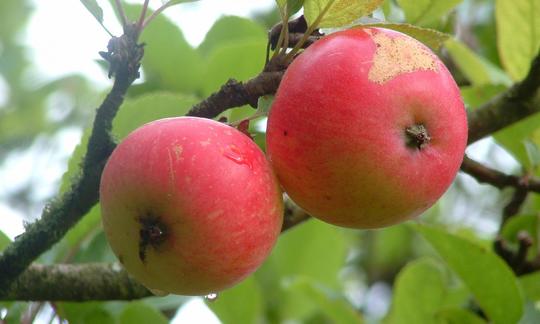

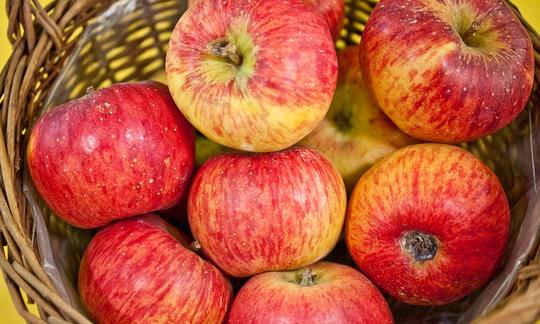



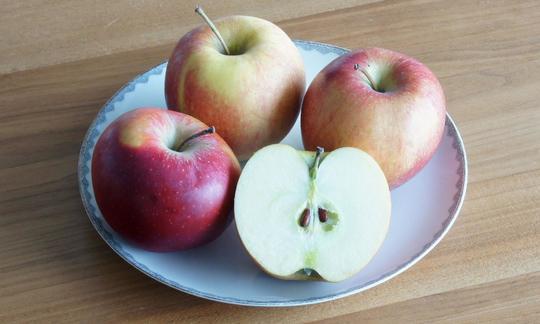

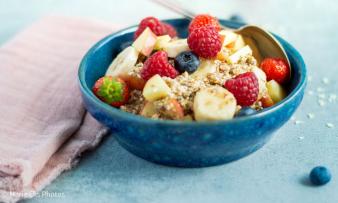
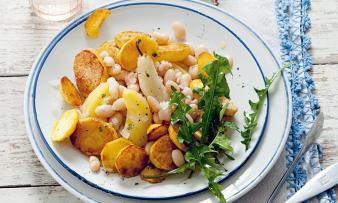
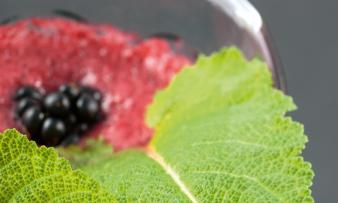





Comments